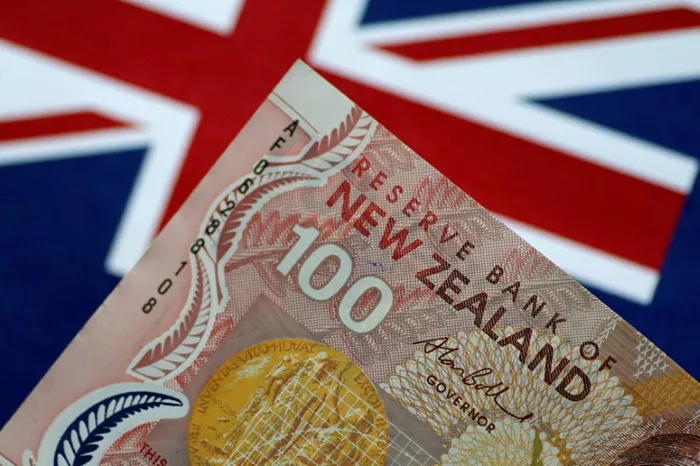The Reserve Bank of New Zealand (RBNZ) is widely anticipated to reduce its cash rate by 25 basis points to 3.25% during its May policy meeting. With this move largely priced in by the market, the New Zealand Dollar (NZD) is expected to react to the central bank’s updated guidance, particularly regarding future interest rate projections.
Unless there are significant surprises, the NZD will likely be influenced by the RBNZ’s outlook, especially its predictions on the cash rate. Markets are expecting the NZD to potentially dip below 3% later this year, a level lower than the RBNZ’s previous forecast of 3.1%. If the bank fails to meet these dovish expectations, the NZD may experience increased volatility in the opposite direction.
RBNZ Set to Continue Rate Cuts
The decision to cut the cash rate by 25 basis points is seen as a certainty, bringing the total reduction for the current cycle to 225 basis points. According to Bloomberg’s swap pricing, the likelihood of a 50 basis point cut is minimal, particularly after the substantial easing already undertaken by the RBNZ.
Looking ahead, markets assign a 75% chance of a further 25 basis point rate cut in July. However, traders are cautious about the possibility of the cash rate falling below 3%, with expectations of that occurring being modest at best.
Key Focus: RBNZ’s Cash Rate Forecast
The direction of the NZD will largely depend on whether the RBNZ’s updated cash rate forecast includes additional cuts. Three months ago, the central bank’s forecast projected the cash rate would bottom out at 3.1%, with the possibility of it falling below 3% slightly more likely than staying at 3.25%.
Currently, markets expect the RBNZ to adopt a more dovish stance. However, if the updated forecast does not meet or exceeds these expectations, the NZD could face downward pressure. On the other hand, if the central bank falls short of delivering a dovish outlook, the NZD could rally as traders reassess their rate expectations.
Weak Economic Conditions Persist in New Zealand
Although inflation and GDP growth exceeded expectations in the first quarter, along with a lower-than-expected unemployment rate, the overall economic outlook remains weak. Private sector wage growth continues to fall short of forecasts, while oil prices have dropped significantly below projections. Additionally, the trade-weighted NZD has unexpectedly risen, suggesting that medium-term inflation risks may be lower than previously anticipated.
The RBNZ will also need to consider the potential impact of rising uncertainty surrounding U.S. trade policies and how they may affect both New Zealand’s domestic economy and the global economy. Earlier this month, the RBNZ adopted a more dovish stance compared to the Reserve Bank of Australia, indicating that its monetary easing cycle is still in its early stages.
Rate Cuts Not Guaranteed as Economic Outlook Remains Soft
Despite the consensus that the RBNZ will maintain the cash rate at around 2.5% during this cycle, especially as fiscal policy support remains limited, New Zealand’s labor market remains weak. The participation rate is declining, while the underutilization rate is rising, suggesting a subdued outlook for wage growth and inflation.
As the RBNZ’s primary mandate is to control inflation, the bank may base its decisions on hard data rather than assumptions. With inflation expectations starting to rise, if the RBNZ’s updated rate forecast is less dovish than anticipated, the NZD could see a post-policy boost.
NZD/USD Momentum Remains Bullish
The New Zealand Dollar recently touched a high for the year, briefly reaching levels last seen after the U.S. presidential election, before pulling back. While a hammer candlestick pattern formed at the 0.6030 level, signaling potential downside risk, this formation occurred during a period of thin trading due to public holidays in the U.S. and the U.K., raising questions about its reliability.
Technical indicators suggest bullish momentum is in play, with the MACD crossing above the zero line and the RSI (14) breaking above 50, indicating more potential for upward movement than downside risk.
Resistance levels are seen at 0.6030, 0.6110, and 0.6200, with support at 0.5986, 0.5900, the 200-day moving average, and 0.5850.
The RBNZ’s official rate decision and monetary policy statement will be released at 2:00 PM Wellington time (12:00 PM AEST), with Deputy Governor Christian Hawkesby scheduled to speak to the media at 3:00 PM Wellington time (1:00 PM AEST).
Related Topics:
US CPI Report Highlights Lower-than-Expected Inflation in April
AUD/USD Exchange Rate Consolidates as Market Awaits Eventual Rebound

